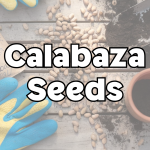Tips, Tricks, Lessons-Learned, and so much more
Isn’t it strange how one thing leads to another when you’re in the garden? We started off just trying to grow Venus Fly Traps because the kids thought they were cool and a little scary, and then we got obsessed with Snow Lettuce because it’s so crisp and pretty, and now here we are digging up Japanese knotweed roots like it’s some kind of buried treasure.

At first, knotweed felt like a problem It was growing wild and we kept stepping on it while planting other stuff. But then I read about the Japanese Knotweed Roots and how they’re good for tea and tinctures and I was curious. So of course I tried pulling one up, and well, I nearly fell face-first into the dirt. Typical me
But you know what It surprised me The roots were strong deep and kind of beautiful in a wild earthy way, Have you ever had a plant totally change your mind like that? If not keep reading You might find yourself loving these roots too. We’ll show you how deep they grow, what they look like how to make tea and even how to turn them into something helpful and healing Let’s get started.

How Deep Do Japanese Knotweed Roots Grow?
Japanese knotweed roots can grow up to 10 feet deep in the ground! That’s as tall as a baby giraffe. The roots grow straight down looking for water and food, and they are very strong. They can even grow through cracks in rocks, roads, or walls. That’s why it’s very hard to get rid of them.

What Do Japanese Knotweed Roots Look Like?
Japanese knotweed roots are thick, brown, and rope-like. They can look like a long carrot but tougher and sometimes orange on the inside. When you break them, they snap like a pencil. Some parts are darker, and some are yellow or orange.

How Far Do Japanese Knotweed Roots Spread?
These roots spread up to 23 feet sideways from the main plant. That means they can pop up in your yard even if the plant started way over in your neighbor’s garden.

How to Harvest Japanese Knotweed Root?
Step-by-step:
Wait for fall or early spring. The roots are stronger then.
Find the plant. Look for red stalks with bamboo-like rings.
Dig around the plant about 2 feet out.
Use a shovel to go deep—about 2–3 feet.
Pull out the root clumps.
Shake off the dirt and wash them in water.
Helpful Tips:
- Harvest in the wild, away from pollution.
- Use a garden fork, it’s gentler than a shovel.
- Clean with a hose outside before bringing inside.

How to Make Japanese Knotweed Root Tea?
You need:
- 1 tablespoon of dried or fresh chopped knotweed root
- 2 cups of water
- Small pot
- Strainer
Directions:
- Boil the water in a pot.
- Add the root pieces.
- Turn down the heat and simmer for 15–20 minutes.
- Strain out the roots.
- Let it cool and enjoy!
Note: The tea tastes like earthy rhubarb. You can add honey or lemon.

FAQ
How do I know it’s Japanese knotweed?
Look for red stems and green heart-shaped leaves. The stalks look like bamboo.
Is Japanese knotweed root safe to eat?
Yes, but only in small amounts. Make sure it’s clean and not from a polluted place.
Can I use dried root for tea?
Yes, Just slice and dry it, then store it in a jar.
What does knotweed root taste like?
It’s sour and earthy, a little like rhubarb.
Can I freeze the roots?
Yes. Wash, slice, and freeze in bags to use later.
How long can I keep dried roots?
Keep them in a jar with a lid for up to 1 year in a cool, dry place.
Can I blend the root?
Yes, after boiling it or softening it, you can blend it for smoothies or pastes.
Can I use the leaves too?
Leaves are not usually used in tea or tinctures, just the roots.
When is the best time to pick the root?
Fall or early spring is best.
How do I dry the roots?
Slice thin and leave on a tray in a warm place.
Can I plant it?
No! It’s illegal to plant Japanese knotweed in many places because it spreads too fast and hurts other plants.
Japanese knotweed roots are powerful, tough, and useful. They grow deep and spread far. Just be sure to harvest them the right way, clean them well. Remember, never plant this weed. Instead, learn from it and use it wisely.






[…] started digging deeper into plant care, even learning about tricky stuff like Japanese Knotweed roots, which, let me tell you, are no joke. It made us realize how wild and wonderful plant life can be. […]